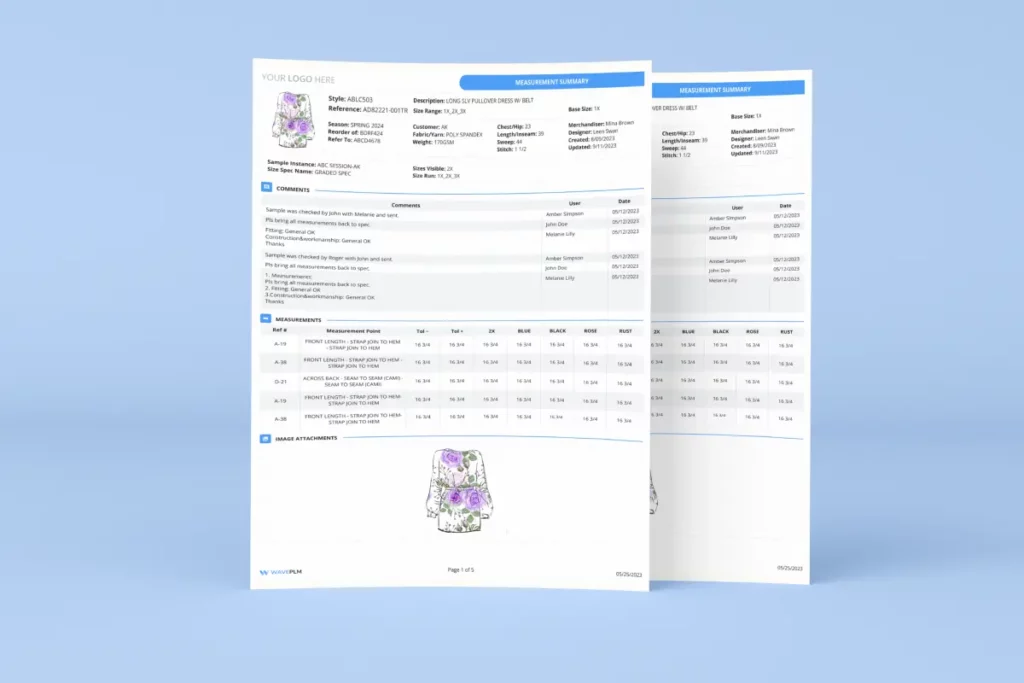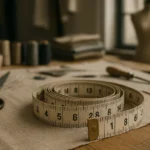
In the fast-paced world of fashion, precision is key. Whether you’re a designer creating a new collection, a pattern maker bringing designs to life, or a buyer evaluating garment specifications, accurate measurements are crucial. In this article, we’ll delve into the art of writing and interpreting measurements in the fashion industry, exploring why precision matters and providing practical tips for ensuring accuracy every step of the way. Understanding the principles of technical writing is essential for achieving the level of precision and accuracy discussed here.
Why Precision Matters
In the realm of fashion, while there’s no ‘absolutely correct’ way to measure, the concept of precision transcends mere rhetoric; it stands as a foundational principle upon which the success or failure of a garment hinges. The pursuit of precision, despite the absence of a universally accepted method, is fundamental. Let’s delve deeper into why precision holds such paramount importance:
1. Fit
At the heart of every garment lies the aspiration for a flawless fit. Accurate measurements serve as the linchpin in achieving this objective, ensuring that garments drape the body in a manner that accentuates its contours, thereby elevating both comfort and style.
2. Consistency
Within the intricate web of fashion production, consistency emerges as a cornerstone, particularly in matters of sizing. Precise measurements act as the lighthouse guiding the maintenance of uniformity across diverse sizes and styles, thereby fostering a coherent brand identity that resonates with consumers.
3. Cost Efficiency
The ramifications of erroneous measurements extend beyond mere aesthetic displeasure, often manifesting in tangible financial repercussions. From the squandering of precious fabric to the necessity of costly rework, inaccuracies in measurements can precipitate a cascade of wastage and expenditure. By prioritizing precision from the outset, fashion enterprises can mitigate such fiscal burdens, optimizing production processes and bolstering profitability.
4. Customer Satisfaction
Within the dynamic landscape of consumer preferences, satisfaction reigns supreme as the ultimate barometer of success. Nothing disheartens a patron more than the disappointment of a garment failing to meet their expectations. Herein lies the crux of precision: by meticulously adhering to accurate measurements, fashion artisans can engender a sense of delight and fulfilment in their clientele, surpassing anticipations and fostering enduring loyalty.
In essence, precision in measurements stands not only as a requisite for operational efficiency but also as a testament to a brand’s commitment to excellence and customer-centricity. It is the cornerstone upon which the edifice of success in the fashion industry is erected, serving as a beacon guiding practitioners towards the zenith of sartorial prowess and consumer satisfaction.
Technical Writing: Measurements Basics
Having grasped the significance of precision in fashion measurements, let’s embark on a comprehensive exploration of the fundamental principles underpinning the accurate documentation of measurements:
1. Utilization of Standard Units
Embrace the use of standard units of measurement, such as inches or centimeters, as the cornerstone of your documentation strategy. This adherence ensures not only consistency but also clarity in communication. It is imperative to eschew the utilization of ambiguous terms like “small,” “medium,” or “large,” as these lack uniformity across brands and may lead to confusion among stakeholders. Additionally, the correct use of the ‘decimal point’ is crucial to ensure clarity in measurements, as different notations may be used in various countries. Furthermore, it is necessary to use a ‘non breaking space’ between a number and its ‘measurement unit’ to maintain the integrity of the ‘write measurements’, ensuring that the measurement and its unit are not separated across lines.
2. Inclusion of Key Points
Elevate your measurement documentation by encompassing all pertinent dimensions. Vital points such as bust, waist, hip, inseam, and length should be meticulously recorded. By doing so, you provide a holistic overview of the garment’s proportions, thereby facilitating a precise fit tailored to the wearer’s physique.
3. Emphasis on Specificity
Precision lies at the nucleus of effective measurement documentation. Thus, eschew approximations in favor of exact measurements. Rather than presenting a range, such as “waist: 28-30 inches,” strive for pinpoint accuracy by specifying the precise measurement, such as “waist: 29 inches.” This commitment to specificity fortifies the integrity of your documentation and instills confidence in stakeholders.
4. Clarity in Measurement Locations
Mitigate ambiguity by elucidating the precise locations from which measurements are obtained. Whether it pertains to the natural waistline, hip bone, or another anatomical reference point, clarity in delineating measurement locations obviates confusion and ensures consistency across the documentation.
5. Harnessing Descriptive Language
Elevate the efficacy of your measurement documentation through the adept utilization of descriptive language. Rather than resorting to bland numerical representations, imbue your documentation with vivid descriptors that convey nuances of fit and style. For instance, instead of a mundane “length: 36 inches,” opt for a more evocative depiction such as “midi length: 36 inches from waist to hem.” This narrative approach not only enhances comprehension but also imbues the documentation with a sense of artistry and sophistication.
In essence, the art of writing measurements accurately transcends mere technical proficiency; it embodies a meticulous blend of precision, clarity, and creativity. By adhering to these foundational principles, you pave the path towards unparalleled excellence in fashion measurement documentation, fostering seamless communication and elevating the sartorial experience for all stakeholders involved.
Interpreting Metric Measurements: A Guide for Buyers
As a buyer in the fashion industry, interpreting measurements accurately is essential for making informed purchasing decisions. Here’s a guide to help you navigate the world of garment measurements:

- Refer to Size Charts: Always refer to size charts provided by the brand or manufacturer to understand how measurements correspond to different sizes. Keep in mind that sizing can vary between brands, so it’s important to refer to the specific size chart for each brand.
- Consider Fit Preferences: Take into account the fit preferences of your target demographic when interpreting measurements. For example, if your customers prefer a more relaxed fit, you may need to adjust your sizing recommendations accordingly.
- Look for Consistency: Pay attention to consistency in measurements across different sizes and styles within the same brand. Inconsistencies may indicate quality control issues or inaccuracies in measurement documentation.
- Ask for Clarification: If you’re unsure about any aspect of the measurements provided, don’t hesitate to ask the seller or manufacturer for clarification. It’s better to seek clarification upfront rather than risk purchasing garments that don’t meet your expectations.
- Consider Alterations: Keep in mind that minor alterations can often be made to garments to achieve a better fit. If a garment’s measurements are slightly off, consider whether alterations can be made to accommodate your needs.
Leveraging Technology: The Role of PLM Software in Managing Measurements
In the digital age, technology plays a crucial role in streamlining processes and improving efficiency across various industries, and the fashion industry is no exception. Product Lifecycle Management (PLM) software has emerged as a powerful tool for fashion companies to store, manage, and analyze garment measurements effectively. Technical communicators and technical editors utilize writing guidelines to enhance the accuracy and reliability of measurements managed through PLM software. Let’s explore how PLM software, such as Wave PLM, revolutionizes the way measurements are handled in the fashion industry:
Centralized Measurement Unit Database
PLM software serves as a centralized database for storing all garment measurements, including size specifications, fitting details, and top measurements. Instead of relying on scattered spreadsheets or paper documents, fashion professionals can access comprehensive measurement data within a single platform, facilitating collaboration and data sharing across teams.

Customizable Tolerance Settings
One of the key features of PLM software like Wave PLM is the ability to define measurement tolerance levels. Tolerance settings allow users to establish acceptable ranges for each measurement, ensuring that any inconsistencies or deviations from the standard are flagged for review. By setting precise tolerance levels, fashion companies can also maintain quality control and minimize the risk of production errors.
Automated Error Detection
PLM software streamlines the measurement validation process by automatically detecting and highlighting any discrepancies or inconsistencies in garment measurements. Whether it’s a mismatch in size specifications or a deviation from the standard fitting requirements, PLM software like Wave PLM identifies errors in real-time, allowing users to address them promptly and prevent costly mistakes downstream.
Seamless Reporting Capabilities
Generating comprehensive reports on garment measurements is a breeze with PLM software. With just a few clicks, users can generate customized reports that provide insights into size specifications, fitting details, and top measurements for each garment style. These reports not only serve as valuable reference documents for internal teams but also facilitate communication with external partners and suppliers.
Enhanced Collaboration and Communication
PLM software promotes collaboration and communication among stakeholders involved in the measurement process. With features like real-time updates and comments, users can collaborate seamlessly on measurement-related tasks, share feedback, and also track changes throughout the product development lifecycle. This level of transparency and communication fosters a collaborative environment where everyone is aligned on the garment’s specifications and requirements.
Conclusion
To sum up, incorporating PLM software into the measurement management process revolutionizes the way fashion companies handle garment measurements. By providing a centralized database, customizable tolerance settings, automated error detection, seamless reporting capabilities, and enhanced collaboration tools, PLM software like Wave PLM empowers fashion professionals to ensure precision and consistency in measurements, ultimately driving efficiency and innovation in the fashion industry. As technology continues to evolve, leveraging PLM software will become increasingly essential for fashion companies striving to stay ahead in a competitive market landscape.





Leave a Reply